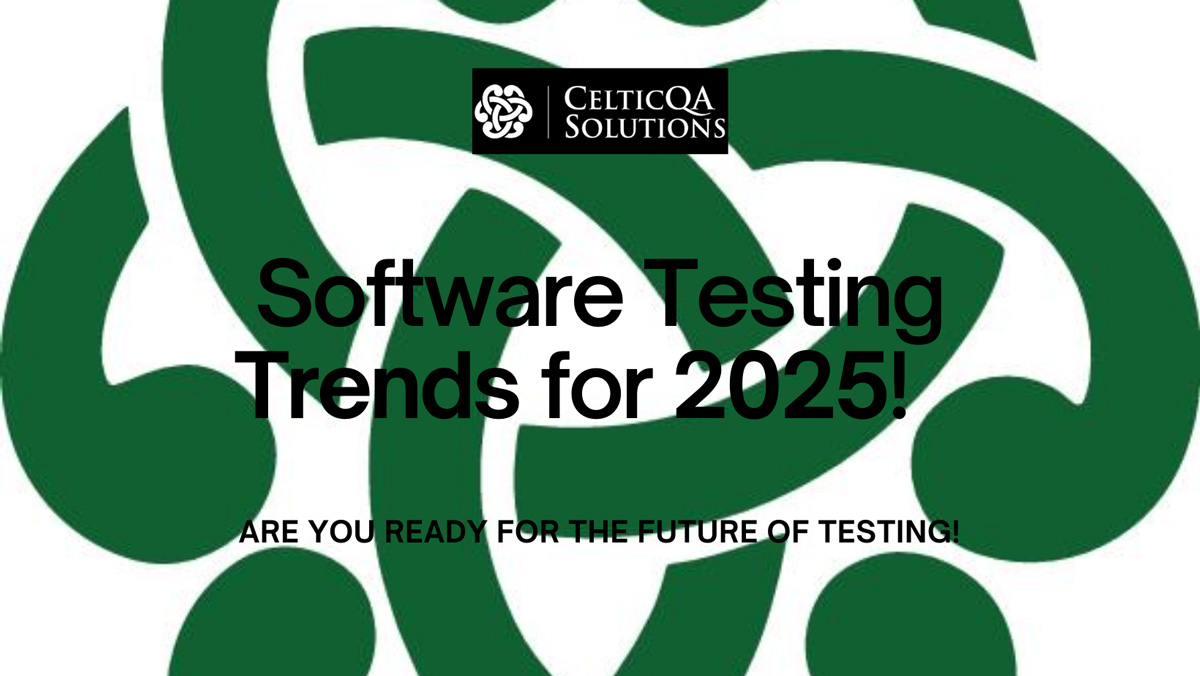The software testing landscape is evolving rapidly, driven by advancements in technology, the adoption of agile methodologies, and the growing complexity of digital ecosystems. As organizations strive to deliver high-quality software at speed, staying ahead of emerging trends in software testing becomes crucial. Here are the key software testing trends to watch in 2025.
1. Shift-Left Testing
Shift-left testing continues to gain traction, emphasizing early and frequent testing in the software development lifecycle. By identifying defects sooner, teams can reduce costs, improve software quality, and accelerate time to market. This approach aligns testing efforts with development, promoting a culture of continuous quality assurance.
2. AI and Machine Learning in Testing
Artificial intelligence (AI) and machine learning (ML) are transforming software testing by automating test case generation, detecting patterns in test data, and predicting potential defects. AI-driven test automation enhances efficiency, allowing teams to execute complex test scenarios faster while improving test accuracy and coverage.
3. QAOps Integration
QAOps, the practice of integrating quality assurance into DevOps workflows, is becoming essential for achieving continuous testing. By embedding testing into CI/CD pipelines, organizations can ensure that software quality is maintained throughout development and deployment. QAOps enhances collaboration between development, operations, and QA teams, fostering a more streamlined release process.
4. Low-Code and No-Code Testing
With the rise of low-code and no-code development platforms, testing methodologies are also adapting. These tools enable non-technical users to create and execute test cases without extensive coding knowledge. As enterprises adopt low-code solutions, QA teams must develop strategies to test applications effectively while leveraging these platforms.
5. API Test Automation
With the increasing reliance on microservices and API-driven architectures, API test automation is becoming a priority. Automated API testing ensures seamless integration between different software components, validating functionality, security, and performance. Robust API testing frameworks will play a crucial role in maintaining software reliability in 2025.
6. Internet of Things (IoT) Testing
The proliferation of IoT devices presents unique testing challenges, including connectivity, security, and performance across diverse environments. As IoT adoption expands, software testers must implement specialized strategies to ensure seamless functionality, data integrity, and security across interconnected devices.
7. Accessibility Testing
Digital inclusivity is gaining importance, making accessibility testing a critical focus. Ensuring that applications comply with accessibility standards, such as WCAG, enables organizations to provide equitable user experiences. Automated accessibility testing tools and AI-driven solutions will help streamline this process, ensuring compliance and usability for all users.
8. Security Testing and DevSecOps
With cybersecurity threats on the rise, integrating security testing into the development lifecycle is paramount. DevSecOps promotes the inclusion of security measures from the outset, ensuring that vulnerabilities are identified and mitigated early. Automated security testing tools will play a key role in strengthening application security in 2025.
Conclusion
As software development methodologies continue to evolve, organizations must embrace these emerging trends to maintain software quality, enhance user experience, and stay competitive in the digital age. At CelticQA Solutions, we specialize in helping businesses navigate these changes by providing tailored QA strategies, automation frameworks, and managed testing services. Our expertise in shift-left testing, AI-driven automation, and QAOps integration ensures that your software quality remains at the highest standard. By partnering with us, organizations can future-proof their testing processes, optimize their development lifecycle, and achieve long-term success in 2025 and beyond.

